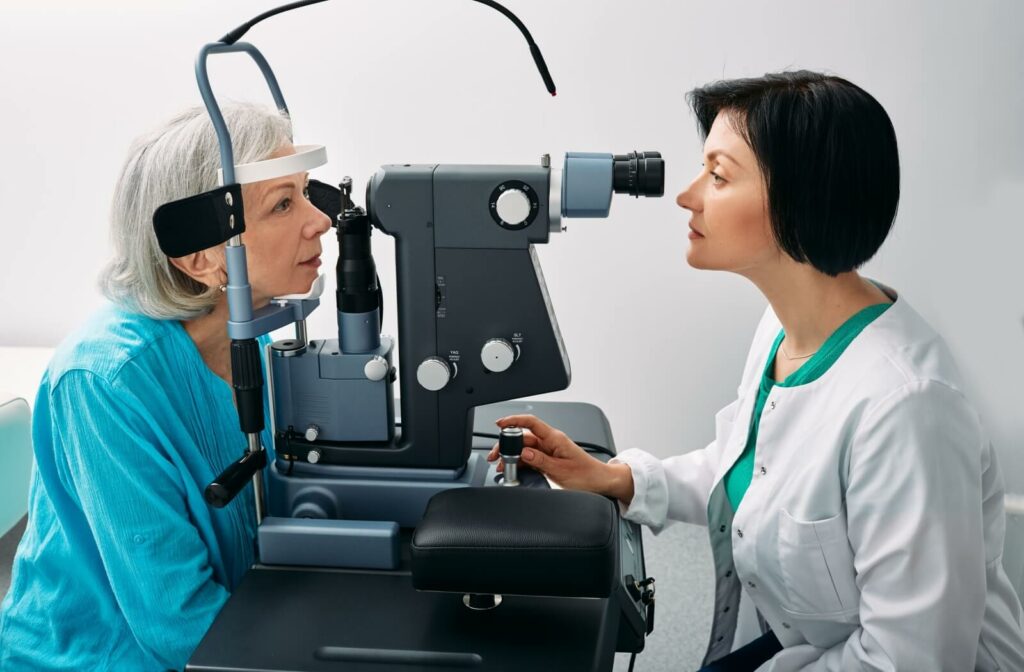Just How an Eye Doctor Can Help Avoid Vision Complications in Chino
Just How an Eye Doctor Can Help Avoid Vision Complications in Chino
Blog Article
Discovering the most recent Technical Improvements in Optometry and What They Mean for Optometrists
From the accuracy of Optical Coherence Tomography to the nuanced understandings offered by AI-driven analysis devices, these developments are setting brand-new standards in individual assessment and therapy. As these advancements permeate the technique, eye doctors are faced with the difficulty of welcoming these devices to boost individual outcomes.
Advancements in Diagnostic Devices
Progressing the field of optometry, technologies in analysis devices have transformed the way eye treatment experts analyze and diagnose visual impairments and ocular problems. The previous years has witnessed significant technical advancements, enabling more thorough and accurate analyses.
One more key innovation is the intro of innovative corneal topography systems, which map the surface area curvature of the cornea with accuracy. These tools are specifically useful for suitable call lenses and detecting corneal disorders. Electronic retinal imaging has actually transformed typical ophthalmoscopy, using detailed, breathtaking views of the retina that facilitate thorough visual evaluations.
The advancement of wavefront aberrometry has also been crucial, enabling the evaluation of refractive errors with unequaled accuracy (Eye Doctor Optometrist). This modern technology aids in customizing restorative lenses and enhancing surgical end results for refractive surgical treatments. Collectively, these diagnostic innovations encourage optometrists to deliver remarkable person care, making certain very early intervention and tailored therapy techniques, ultimately improving aesthetic wellness end results
AI in Person Management
Building on the foundation of advanced analysis devices, the consolidation of artificial knowledge (AI) in patient management stands for a transformative leap for optometry. AI systems are increasingly employed to improve effectiveness, accuracy, and customization in client treatment.
In addition, AI-driven systems assist in streamlined patient interactions and administrative processes. Automated organizing, online assessments, and personalized follow-up plans not just enhance patient satisfaction yet likewise maximize time administration for specialists. These systems can triage clients based upon the necessity of their problems, guaranteeing that those in important demand get prompt attention.
Additionally, AI boosts decision-making by supplying optometrists with evidence-based recommendations and therapy pathways. By integrating data from electronic health records, AI tools supply understandings that inform scientific choices, minimizing the danger of errors and improving person outcomes. As AI continues to progress, its duty in client monitoring will likely broaden, improving the landscape of optometric treatment.
Advances in Retinal Imaging
In the realm of optometry, retinal imaging has experienced impressive technological developments that are improving analysis capabilities and person treatment. Advancements such as Optical Coherence Tomography (OCT) and fundus digital photography have actually transformed exactly how optometrists envision and analyze the retina.
Improved imaging modalities like OCT angiography are additional refining diagnostic precision. Optometrist Chino. Such improvements facilitate the identification of minute retinal changes that can symbolize condition progression.
In addition, developments in fabricated knowledge are augmenting retinal imaging by making it possible for computerized evaluation of big datasets. These systems aid optometrists in determining patterns indicative of pathology, therefore boosting diagnostic precision and performance. check over here Jointly, these technologies are transforming retinal imaging right into a keystone of modern-day eye treatment, boosting outcomes and expanding restorative possibilities.
Teleoptometry's Growing Role
Teleoptometry is increasingly ending up being a vital part of eye treatment, driven by innovations in electronic communication and analysis tools. This is particularly advantageous in rural and underserved locations where accessibility to specialized eye care is frequently minimal.
The assimilation of expert system (AI) additional enhances teleoptometry, enabling the evaluation of aesthetic data and aiding in the detection of ocular problems such as glaucoma and diabetic person retinopathy. AI-powered algorithms can rapidly analyze complicated imaging data, providing optometrists with beneficial understandings that boost scientific decision-making.
Moreover, teleoptometry sustains continuity of treatment via seamless integration with digital health and wellness records (EHRs), permitting eye doctors to preserve detailed client histories. This makes sure that patients get tailored and consistent care also when consulting with different specialists.
Regardless of these advantages, challenges remain, including making certain data security and taking care of individual assumptions. Teleoptometry stands for a significant stride towards even more obtainable, effective, and patient-centered eye care. As technology develops, its duty is poised to increase even more.

Future Patterns in Eye Treatment
A myriad of innovative trends is set to reshape the future of eye care, driven by technical advancements and the progressing demands of clients. One substantial fad is the combination of fabricated intelligence (AI) in diagnostics, which assures to boost the accuracy and performance of eye evaluations. AI algorithms can evaluate vast amounts of information from retinal photos, potentially detecting conditions like diabetic retinopathy and glaucoma earlier than conventional methods.
In addition, individualized medication is getting grip in optometry, with genetic screening informing customized Discover More Here treatment plans. This technique aims to enhance patient outcomes by customizing interventions to specific hereditary profiles. Wearable innovation, such as smart get in touch with lenses, is likewise imminent, using real-time monitoring of intraocular pressure or sugar levels, thus providing constant insights right into ocular and systemic health and wellness.
The adoption of increased truth (AR) and online reality (VIRTUAL REALITY) in training and patient education is another emerging pattern. These modern technologies supply immersive experiences that can boost understanding and skills both for patients and optometrists. As these fads evolve, optometrists must stay abreast of technological developments to provide innovative click here to read treatment, guaranteeing enhanced patient outcomes and complete satisfaction in the dynamic landscape of eye treatment.
Conclusion

Collectively, these diagnostic developments equip optometrists to deliver exceptional client treatment, ensuring very early treatment and customized treatment techniques, ultimately boosting visual health and wellness outcomes.

As these technologies continue to advance, eye doctors need to adapt and include them right into method, inevitably maximizing process efficiency and raising the criterion of eye treatment delivered to clients.
Report this page